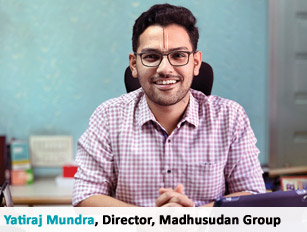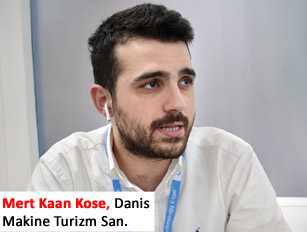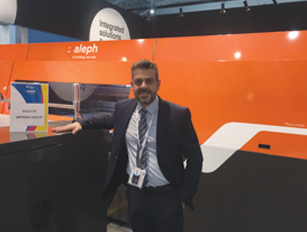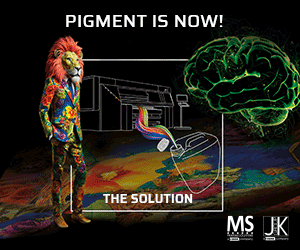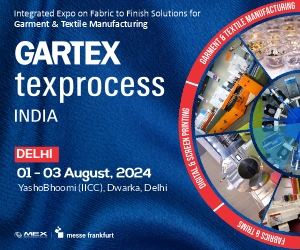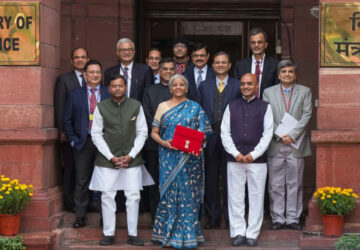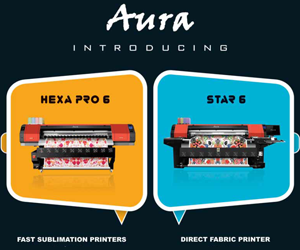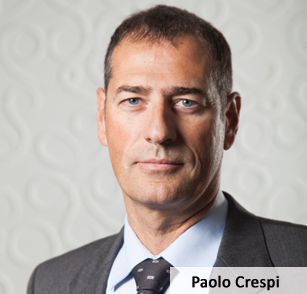 Epson, a leader in digital textile printing from Japan, Italy’s For.Tex, a leader in dye, thickeners and textile pre- and post-treatment product manufacturing, and Fratelli Robustelli, an Italian company known for its textile printing engineering and production, have been partners for 15 years bringing together their expertise and competencies to provide a complete digital textile printing solution. The three companies came together in 2003 with Monna Lisa, a production-line digital printer equipped with Epson piezo-electric inkjet technology. In an interview with Apparel Views Editor Arvind Kumar during ITMA Barcelona 2019, Paolo Crespi, Direct to Fabric Sales & Marketing Director for Europe, Middle East, Africa and Russia (EMEAR) and the Americas discusses more about the company and its further plans.
Epson, a leader in digital textile printing from Japan, Italy’s For.Tex, a leader in dye, thickeners and textile pre- and post-treatment product manufacturing, and Fratelli Robustelli, an Italian company known for its textile printing engineering and production, have been partners for 15 years bringing together their expertise and competencies to provide a complete digital textile printing solution. The three companies came together in 2003 with Monna Lisa, a production-line digital printer equipped with Epson piezo-electric inkjet technology. In an interview with Apparel Views Editor Arvind Kumar during ITMA Barcelona 2019, Paolo Crespi, Direct to Fabric Sales & Marketing Director for Europe, Middle East, Africa and Russia (EMEAR) and the Americas discusses more about the company and its further plans.
Please tell us more about Epson Group?
Epson is a Japanese company, which entered the textile business in 1998, thanks to the collaboration with two other Italian companies, Fratelli Robustelli and For.Tex. Together with these two Como-based companies, Epson developed a digital textile printer, combining unmatched quality and high productivity with even greater reliability that is one of the most versatile digital textile printers in the market today. The first digital printer was named Monna Lisa, which is still the brand name of our printers. Epson later acquired Fratelli Robustelli and For.Tex, which are today part of the Epson Group, each one bringing its own expertise, respectively machine engineering and chemical development.
So, we have one person to manage all the issues coming from our customers. I have more than 13 years of experience. I’ll be responsible for textile division of Epson for Western market starting from Europe, Middle East, Africa and Russia (EMEAR) and the Americas. Epson is a Japanese company we share the world in different areas. Eastern region including India, Pakistan, Japan etc. will be managed by another person from Japan. This is our way to move aggressively in the market. Try to do best to spread our technology in every country. Epson already has many subsidiary companies all over the world located locally so it is better and easier than before to spread in each country.
What new technologies have been presented at ITMA now?
With this ITMA we are promoting two new models of Monna Lisa. Customers can see entire line-up of our products here. ITMA is one of the most important events in the textile calendar for Epson and the latest show has been a great success for us. Here we have showcased our new Monna Lisa EvoTre range and new Genesta pigment inks, demonstrating the latest Epson innovations for an evolving digital textile market. The new Monna Lisa EvoTre range features Epson PrecisionCore Technology and offers a complete solution for all textile market needs, from large scale, high speed production to small run, on-demand sample printing. Monna Lisa EvoTre range includes the new Monna Lisa EvoTre 64 and the Monna Lisa EvoTre 8, as well as the Monna Lisa EvoTre 32 (displayed in the 16 channel configuration) and the Monna Lisa EvoTre 16. The decision to exhibit the entire line-up of the Monna Lisa series at the fair was much appreciated by our visitors who were able to experience, once again, the superb quality of our machines which has remained consistent after more than 15 years. Above all, visitors were genuinely delighted to see our latest top-of-the-range, high productivity Monna Lisa EvoTre 64.
How was the response at ITMA?
Good enough. The number of customers and prospects has been particularly high since the opening day and has remained constant throughout the entire event. It was a great opportunity to get in touch with international clients, coming not only from European countries, but also increasingly from markets further afield such as Turkey, India, Pakistan and South America, especially Peru, Mexico and Brazil. This has resulted in many new conversations with prospective customers.
How competitive are you as a company to provide inks in terms of prices?
We are in the market with several units and 100 per cent genuine inks since 2003 when we started. This means that we can and we are able to stay in the market even if prices of the inks move down. So we revise our strategy area, we control all the cost because we produce everything internally. So again from ITMA exhibition we have revised our strategy according to the market conditions and request. Price nowadays is really different from the time we started.
Today everyone is talking about speed and single pass technologies, as a company what is your take on it?
Nowadays, we have many competitors. We did what we needed to do. We had several customers that wanted to print faster with medium or large batch. So, 64 head machine has enough speed. It can give production of about 800 sq mtr per hr with high quality. So for today we think it’s a right solution with good enough productivity. In future we may look at single pass.
Can you achieve the desired quality in single pass?
Everyone is trying to do both faster and higher quality but at present single pass cannot solve both. You have to compromise on quality of print with single pass. Anyone can choose depending on their need. We don’t focus on only faster productivity as we are moving in many different directions.
How is Epson coping up with the challenge of fastness and sharpness of the colours with pigment inks?
We started developing a series of the inks that improved the previous one because of the request of the market to really announce an ink process that can have a greater sustainability in environment. We are ready to focus on this possibility. We are in the pigment market since the beginning. We started in 2003, representing whole series of inks – acid, reactive, disperse and pigment. Nowadays, as we say, we have improved fastness and quality, we can print with new precision core head technology and speed is also better than before.
Can machine run with all these inks?
The machine can be installed for acid, reactive, disperse or pigment inks. Yes, if there is the need to change the market segment, then the ink can be changed accordingly.
Do you feel pigment is future and it will go further now?
Yes, for more than one reason. Pigment process is very short, you have to print dry and finish. But other inks require pre- and post- treatment with printing. You save a lot of energy, water, time etc. and today everyone is talking about sustainability. By using pigment you can do it, it’s one of the ways. Probably in future we will have more possibilities.
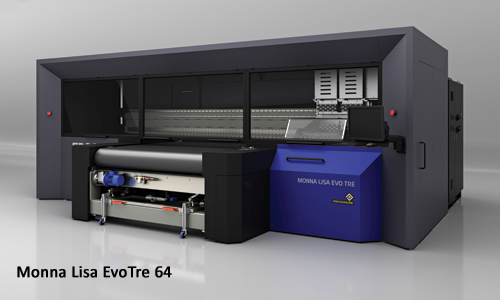 Which countries are you focusing more?
Which countries are you focusing more?
In Italy we have the most important number of installations – almost 70%. But thanks to offices and companies located in many countries, we expect to grow in several markets like Latin America, Turkey, Asia, Thailand, Korea as well. Because we have offices and services there already, so it’s quite easy for our Italian company which has such organisation. We have to move from Italy really different.
Since its launch at last ITMA, what kind of installations Epson has done for Monna Lisa?
We installed many in Italy, Turkey, Pakistan, India as well as Korea, Japan and China. I think we really spread what we targeted and expected to do more in future.
How are India and Bangladesh markets?
We see India as one of the fastest growing markets in the world. We are present in India since 2009-10 with several units already running successfully. We are very sure of selling more machines in the coming years. In Bangladesh not yet, but it is also one important market for us in the future.
Any targets for next year, especially for India?
New and nicer number of units is the only way to improve our business. For customers especially in India, 32 head and 64 head printers are attractive with reactive inks. We have other markets ready to cater pigment. We found that only one agent working for that one wide country was not enough so we enhanced our presence there with Epson India. We have direct employees for selling and technical service now. So, direct sales plus local agents co-operating together in the country is the best way to speed up as much as possible. To cover a wide country like India, Comotex, DCC and Epson India work together for the same purpose.
What edge does Epson have over other existing players in the market? Everyone has digital technology already but we have the longest experience. We have large number of units working since many years and in a market that is very difficult. We can do everything inside our plant. We supply the ink, heads and the entire chemistry for the process from one company. This is a big advantage because if a customer has a problem, whether it is the head or the ink or the system interface, the solution comes from one source. This is one of our biggest strengths. As competitors are really aggressive, what we have to do at this stage is just to speed up relying on our technicians and know how. Productivity is important, but what counts more is the ability to deliver quality, with design, research and development. If you put all together we have a chance to compete.
So now what will be your priority?
Keep doing R&D and install many machines with the best after sales service.
What have you done for back-end support, especially in textiles?
We provide complete solution, and so customers prefer one-source for all their needs. We have a very nice laboratory in our company in Italy that serves many customers all over the world. The experience was so nice that we decided to make another one. So we created a big laboratory similar to the Italian one also in Japan, and now we are approaching the global market with two big laboratories. Probably another one will come soon. Put aside technology, even service is really important and we are providing the best customer service ever thanks to the expertise of our technicians all over the world. We are really ready to give good support to any customer.



